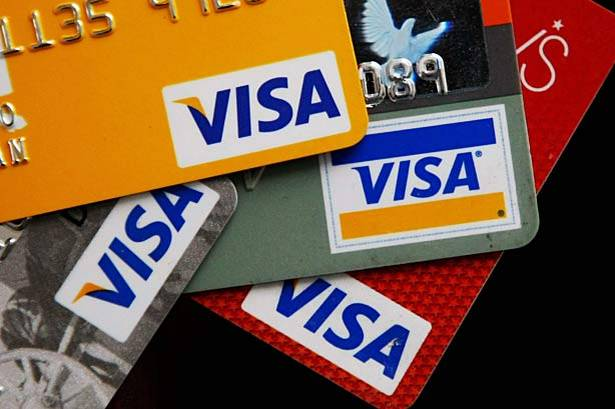Introduction
To host the London 2012 Paralympic and Olympic Games, approximately ten billion pounds has to be spent. This is because quite number of participants and spectators are anticipated to attend. However, not every corporation has a guarantee to sponsor the 2012 Olympic Games.
This report identifies marketing communication mix strategies sponsoring companies use in conveying their marketing messages to the branded target markets (Mintel, 2009b). The focus is on Sainsbury and Coca-Cola and how these sponsoring corporations employ different key marketing communication mix when interacting with the targeted market.
The report initially explains the diverse marketing communication mix elements. The market share for the two companies are mentioned followed by a demonstration of how different tactics and marketing communication strategies are employed by Coca-Cola and Sainsbury to overcome market rival battles and how well the strategies hit the target market (Learmonth, 2010).
The London 2012 Olympic Games background
Basically, the Olympic Games are planned to take place this summer in London England, UK commencing from July 27, 2012 until August 12, 2012. The Olympic Games was given to the town of London subsequent to the appealing tender that was led by Coe Sebastian the ex-Olympic champ along with Livingstone Ken the afterward London mayor. During the bidding process, London was selected the host city whipping front runners including Moscow, New York, Paris and Madrid.
It is expected that athletes from 204 countries will participate in the event. There will be 26 sports with a total of 39 disciplines. During the bidding process London featured 28 sports according to the current summer Olympics. Yet, soft ball and baseball were dropped by IOC. Though there are several venues around the country where some games will be taking place, London is the main venue where most events will occur.
Research methods
Data was collected from interviews, questionnaires, databases, internet and even mail. Each of these data collection methods had its own conditions. To conduct a comparative analysis study on the marketing communication mix that two companies which sponsor the London 2012 Olympics use, both secondary and primary research was carried out.
The secondary research was performed through the available databases including Euromonitor, FAME, Global Market Information Database (GMID), Mintel, and the companies’ annual reports, marketing magazines, the official website for Coca-Cola and Sainsbury’s website (Mosaic Marketing, 2010). Conversely, to collect primary data electronic survey (e-mails) and face to face questionnaires were used.
Analysis, discussion and presentation of the findings
Findings and discussions
Coca-Cola and Sainsbury have been the largest and the longest corporate partners of Olympic Games (Coca-Cola 2012, n.p). Since their earliest attachment with the Olympic Games, the corporations have been ardently committed to not just the sportspersons and open tremendous Olympic familiarity, but equally to fabricate its brand-name via its ethics. Sponsoring the Olympic Games provide both companies with podiums through which their values are shared among customers (Coca-Cola, 2012).
The Coca-Cola Company embraces values of one’s abilities, pursuit of excellence, competitive spirit, sense of fair play and building a more-peaceful and better world (Mahalo, 2010). The company 2012 London Olympic marketing strategies are founded on these values. The companies have adopted various marketing communication tactics aimed at beating marketing competitors. Coca-Cola uses various promotional, advertising strategies and public relations to continuous build its brand.
Marketing communication mix
During Olympic Games, Coca-Cola and Sainsbury incessantly use various marketing communication mix to inform, convince, remind and motivate its consumers about their respective brands (Keller 2001, p.821). The communication mix used by each company symbolizes the voice of the brand and the way in which the firm can establish a dialogue with customers relating to the product offerings. Marketing communication mix used by Coca-Cola Company provides products comprehensive information to consumers and the reason why it is being identified with such products (Keller 2001, p.821).
The communication mix to be used by both companies during the 2012 Olympics includes advertising, sales promotion, personal selling, direct marketing, public relations and sponsorship as well as e-marketing. According to the Olympic marketing and promotional committee, Coca-Cola is accountable for two thirds of the media spending compared to the rest of the corporations that officially sponsor the Olympic and Paralympics games.
In total, Coca-Cola have spent over 20 billion marketing strategies accounting for 64% of the total amount spent on marketing by its competitors namely Pepsi cola and Sainsbury. The reason why Coca-Cola was awarded the largest share in the advertising campaigns is because of its long-term close relations with the Olympic and its huge contribution towards the games (Mintel 2009a, par.3).
Advertising
Advertising is used directly to persuade the target prospects with the least cost possible selling message (The Institute of Practitioners in Advertising 2001, n.p). Coca-Cola has used variety of media channels in its advert campaigns which are selected according to the frequency, reach and the impact on the target audience. One of the advertising campaigns that the company recently launched is the London 2012 Olympic Games theme “Move to the Beat”.
The “move to the beat” anthem has been included in all TV adverts and targets the younger generations. Unlike other sparkling beverages, Coca-Cola adverts are designed to connect teens with Olympic Games and sports in general.
The hit holds the young adulthood through a blending of the two main imperative universal teens’ zeal, melody and games It is estimated that the “move to the beat” TV advert have attracted 90% of the teens and younger generation. This has actually positioned Coca-Cola as the leader in this demographic market compared to other beverage Olympic sponsors.
The essence of the “Move to the Beats” reflects the positivity, optimism and inspiration to the younger generations that have direct connections to the Olympic Games (Sweney 2010, par.4). It is argued that Coca-Cola will use multi-million pounds on TV and other forms of media advert in this Olympic and Paralympics games compared to its rivals. The main aim is to increase its brand positioning.
The campaign was launched featuring the most favorable Olympic hopefuls and local artists to get the young people involved in the Olympics and to be identified with the brand (Sweney 2010, par.5) (see appendix 1). The “Move to the Beat” anthem brings in the strong social element in advertising campaign which balances sports and music without being exploitative and attracts the youth. The advertisement runs in almost over 25 markets across Europe. Comparatively there are such campaigns by Sainsbury for its classic cola brands.
Sales promotion
Sales promotions are the tactical marketing techniques which the companies use to add value to their products or services to be able to attain particular marketing and sales promotion (Brassington 2006, p.720). Coca-Cola has been suing diverse sales promotions towards the London 2012 Olympics to achieve certain marketing targets.
The most prominent promotion that the company used was the design of the Coca-Cola contour bottle with simple white rose between two hands picture featuring the handover of the summer Olympic Games from Beijing to London (Appendix 2 a). The Coked urn was originally utilized by emblematic Londoners and celebs consisting of the prime minister of Britain and the queen of England.
The aim of the promotion was to bring closer the relationships between the brand, the Olympic celebrities and the Olympic Games. With younger generation being the athletes, this form of sales promotion is aimed at inspiring the younger generation to greater heights and achievements. This has also increased the company brand positioning within the target market.
Other promotional techniques used by the company includes the adoption of the Olympic three rings in their Coca-Cola T-shirts, associating the coke products with the Olympic torch relays around the globe (see appendix 2 b) and sponsoring most of the Olympic related events (Coca-Cola, 2012). Also included is the production of the Olympics rings opener and the other sports gears and costumes that most of the participants win after additional use of coke branded products (appendix 2 c).
Similarly Sainsbury uses other methods of promotional campaigns for its classic Cola. Besides positioning its products at strategic points during any Olympic Games events, the company is offering a grand draw of £10000 with a chance to win a ticket at every time of participation. Consumers need not to buy but rather send short messages via mobile phones and can participate at any time.
The main aim of this promotion is to offer stiff competition to the rival Coca-Cola, the major sponsor of the London 2012 Olympic Games. Though the promotion was aimed at identifying the brand with the target market, it is indicated that only 8% of those participated in the grand draw are associated with the company (Coca-Cola Company, 2010). 4% were newcomers while the rest were attracted by the grand prize.
Compared to its competitors, Coca-Cola will focus 48% of its marketing strategies towards sales promotion (Coca-Cola Company, 2012). Sainsbury alternatively will focus only 31% of all its sales strategy. Though the sales promotions depends on each company, the use of mobile and internet varies. Coca-Cola will spend over five million pounds on its internet and mobile sales promotion related marketing strategies. Coca-Cola is facing stiff competition with Sainsbury promising over ten million pounds towards this endeavor.
Direct marketing and personal selling
Coca-Cola engages in personal selling and direct marketing in various platforms known as coke zones. The company targets 180 markets around the globe during the London 2012 and it would be difficult and expensive to do direct marketing and personal selling (Kant & Heerden 2008, p.3).
The company launched a website for customers within UK where they can go and register. After registering and visiting the site clients is capable of earning rewards which can be redeemed for special offers such as music and other forms of entertainment. Special offers are sent through email, telephone or letters (Coca-Cola, 2012).
The company is also running mobile campaigns that are aimed at generating enthusiasm and interest of young people towards the games and association with the company products (Sonera 2009, p.1).
Sainsbury on the contrary have well developed loyalty database which they use to offer loyalty visa cards to their customers for the 2012 Olympic Games (appendix 3). They use well-developed database to boost the sales of classic cola. This strategy has placed Sainsbury in an advanced stage compared to Coca-Cola (Tapp 2008, p.9).
E-marketing strategy
This is the strategy in which companies achieve their marketing objectives through utilizing electronic communication technology (Chaffey 2007, p. 339). Coca-Cola is effective in its London 2012 Olympic e-marketing campaigns. The company effectively uses new media namely internet and social networking sites like face book and twitter. The company has successfully utilized the mobile technology to reaching out to core customers (Mintel 2009b, par.6).
Both the companies have online marketing campaigns each with its own websites offering different products and hand-outs for their users. They have also taken the advantage of the larger internet young population with the largest obligation to partake in the London 2012 Olympic Games (Coca-Cola Company, 2008).
Social networking forms those largest sites where both the companies meet their target customers. For Sainsbury to market itself during the London 2012 Olympics, it has improved its brand awareness athwart various e-marketing outlets and channels. Sainsbury website uses a combination of commercial flair and creativity.
The company’s communication and media team has yearned to maintain the positive image of Sainsbury across the internet, online TV, online magazines, newspapers and via internal online communications. Most online marketing strategies adopted by Sainsbury focus on improving Sainsbury customer aftersales experience. One of the ‘strapline’ messages available in Sainsbury marketing sites include ‘Live Well for Less’ with Sainsbury (Funding Universe, 2006).
Analysis of the findings
From the study, it emanates that Sainsbury marketing communication mix strategy minimally hits the target population as compared to Coca-Cola. This is because only 20% of the total population admires Sainsbury Cola as compared to 80% of the entire population who are well driven by the Coca-Cola brand adverts and marketing communication strategies.
As opposed to Sainsbury, most people opt for Coca-Cola because of its long-term acknowledged flavor, quality, its well reputed brand image, allied brand price and strategic brand promotions (Coke Studio, 2010). Furthermore, it is believed by nearly 60% of the total population that Coca-Cola embraces better strategic advertising while it is hardly memorized if Sainsbury clearly and comprehensively communicates to the target markets.
For Sainsbury marketing strategy, it is apparent that its central marketing pillar is the clear brand image. The company has continued to spearhead the campaign dubbed as ‘Making Sainsbury Great Gain’. In its websites, Sainsbury displays ‘coupons at till’ campaigns and ‘Live Well for Less’ which have immensely drew most clients’ attentions.
The cost effective messages used by Sainsbury are straightforward, unexpected and they tactically win the clients. The roadside posters and internet campaigns are easily understood, very simple and well communicated.
Thus, the specific objectives for Coca-Cola marketing mix are aimed at creating and promoting a brand image, content and distribution of its products. The “move to the beat” premised universal action, has not only revolutionized the company content creation but has also connected the company brand to the target audience. “Move to the beat” campaign has contents that have direct connection to the target audience and is hugely distributed via social media to target audience.
In contrast, Sainsbury aimed at expanding its brand image through marketing mix strategies such as advertising during the Olympics. The company aims at identifying its products with new target audience such as the youth that largely participate in the Olympics and Paralympics.
Key Marketing Communication Mix Elements
Conclusions and recommendations
As an official sponsor of the London 2012 Paralympics and Olympic Games, Coca-Cola Corporation uses key marketing communication mix elements more effectively when fighting marketing competition battles. Direct marketing strategy is similarly used in attracting clients albeit it appears being costly yet actually supportive for any company that might want to use it. Coca-Cola Company has instigated the generation of a catalog having a platform called the ‘Coke Zone’.
Conversely, Sainsbury brand is of great significance in Great Britain particularly in the Olympic Games given that it has a well-developed database to ensure that the corporation incurs the least cost to reach the targeted market (Tapp 2008, p.9). Thus, Sainsbury ought to effectively use the key marketing communication mix strategic elements.
Since Sainsbury marketing communication strategy is hardly unheard-of, the company needs to adopt this strategy to have high valued messages which are cost effective. This will ensure that its marketing communication mix extensively hits the target audience.
References
Brassington, F 2006, Principles of marketing, Pitman Publishing, London.
Chaffey, D 2007, E-business and e-commerce management: strategy, implementation, and practice, Pearson Education Limited, Essex.
Coca-Cola 2012, What is coke zone?. Web.
Coca-Cola Company 2008, Heritage timeline. Web.
Coca-Cola Company 2010, “Coca-Cola partners with Special Olympics”. Web.
Coke Studio, 2010, About coke studio. Web.
Euromonitor International, 2009, Carbonates-Austria. Web.
Funding Universe 2006, J Sainsbury Plc. Web.
Kant, C. & Heerden, C. 2008, Personal selling, Berne Convention, Lansdowne.
Keller, KL 2001, “Mastering the marketing communications mix: Micro and macro perspectives on integrated marketing communication programs”, Journal of Marketing Management, vol. 17 no.7, pp.819-847.
Learmonth, M. 2010, Pepsi’s World Cup campaign infiltrates viral video chart. Web.
Mahalo, N. 2010, Pepsi World Cup 2010 Advertsiment. Web.
Mintel 2009b, Carbonated Soft Drinks. Web.
Mintel 2009a, carbonated soft drinks – UK. Web.
Mosaic Marketing, 2010, Pepsi max: Max your wild side. Web.
Sonera, B 2009, Sales promotion and personal selling. Web.
Sweney, M 2010, Coca-Cola to launch World Cup ad campaign in UK. Web.
Tapp, A 2008, Principles of direct and database marketing, Pearson education limited, Essex.
The Coca-Cola Company, 2010, Awards Archive. Web.
The Institute of Practitioners in Advertising, 2001, Advertising. Web.
Appendices
Appendix 1
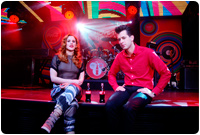
Appendix 2 a

Appendix 2 b

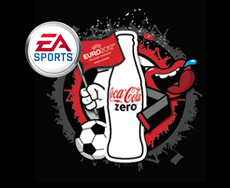
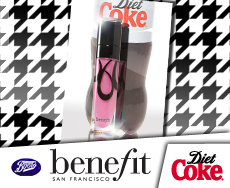
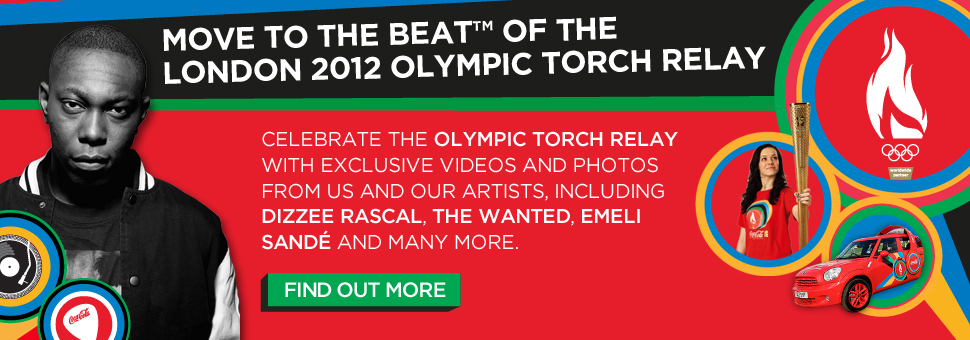
Appendix 2 c
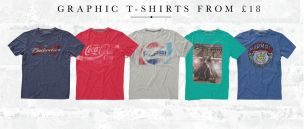

Appendix 3
